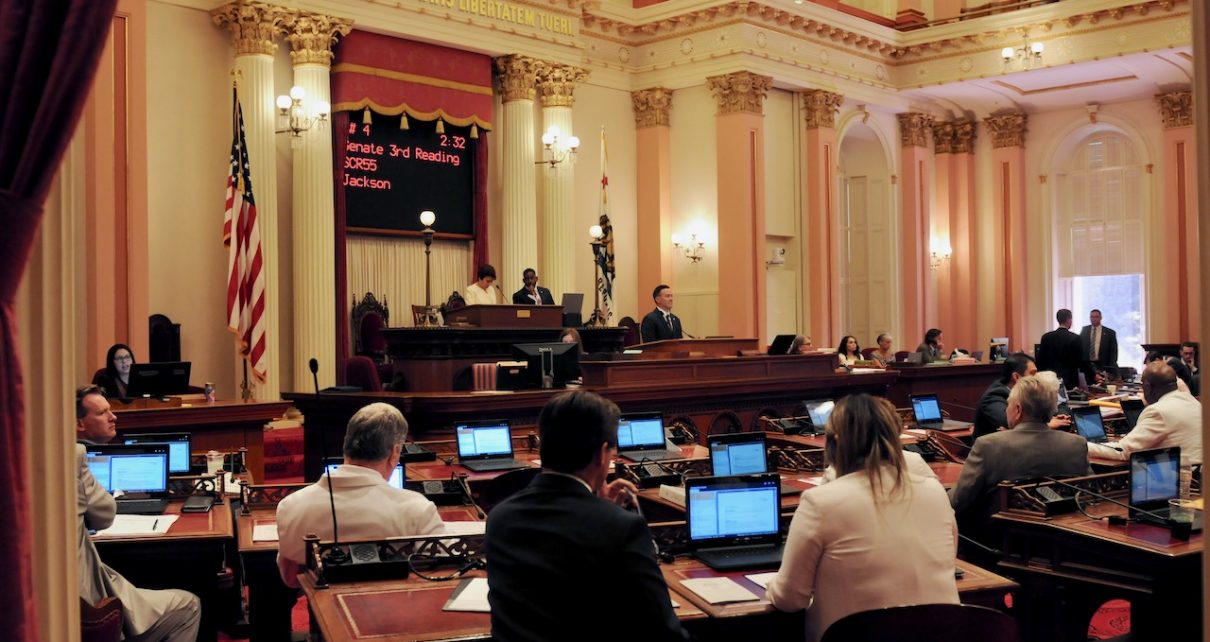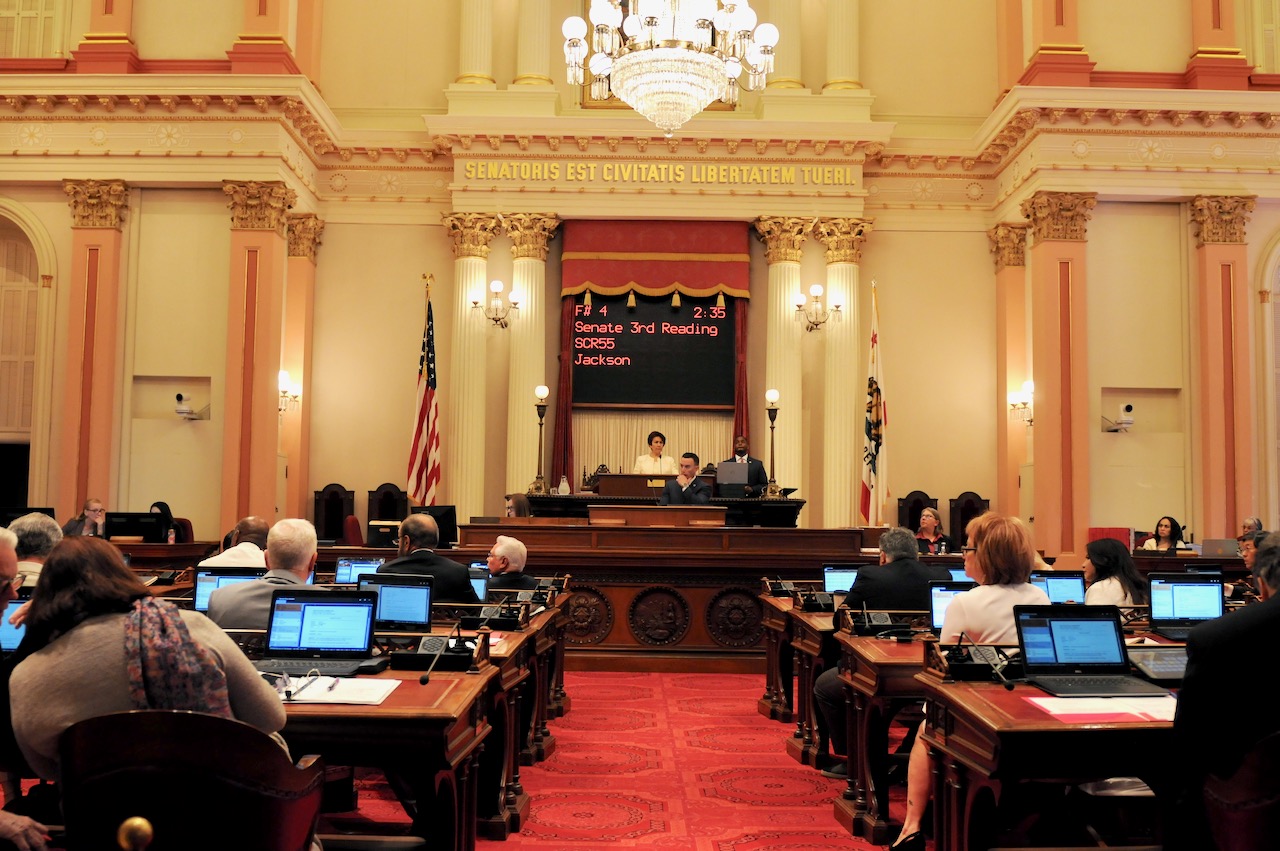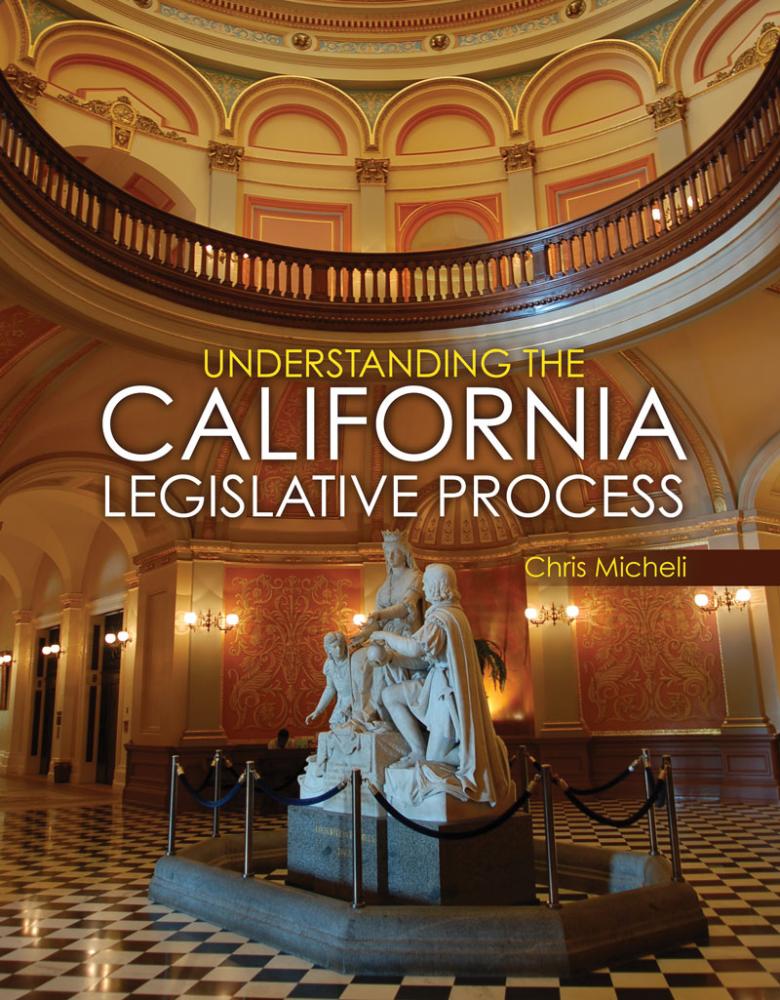
California State Senate. (Photo: Kevin Sanders for California Globe)
Properly Addressing the Presiding Officer of a Legislative Body
Where the Legislature’s rules are silent, ‘Mason’s Manual’ applies
By Chris Micheli, April 11, 2022 6:28 am
There are two areas of confusion regarding properly addressing the presiding officer of a legislative committee or on the floor. In committees, the presiding officer may be addressed by fellow legislators, advocates, or members of the general public. On the floors, the presiding officer is only addressed by fellow legislators. In both instances, there have been questions about how to do so properly and what rules are applicable.
The rules of the California Legislature provide some guidance, as do Mason’s Legislative Manual. Where the Legislature’s rules are silent, “Mason’s Manual” applies. Assembly Rule 10 states: “Mason’s Manual. 10. In all cases not provided for by the California Constitution, by the Assembly Rules, by the Joint Rules of the Senate and Assembly, or by statute, the authority is the latest edition of Mason’s Manual.”
Senate Rule 21.5 provides, in part: “(p) In all cases not provided for by this rule, the Senate Rules, the Joint Rules of the Senate and Assembly, or statute, the authority shall be the latest edition of Mason’s Manual.” And, Joint Rule 31 specifies: “Authority When Rules Do Not Govern. 31. All relations between the houses that are not covered by these rules shall be governed by the latest edition of Mason’s Manual.”
What does Mason’s Manual provide to guide us in these instances? Mason’s Legislative Manual, Chapter 13 (“Conduct of Debate”), Section 110 deals with “Addressing Members or Presiding Officer.” It provides, in part, the following directives:
Section 1. All debate must be addressed to the presiding officer, and not to the members.
Section 2. To guard against the appearance of personalities in debate, it has long been the rule in legislative bodies that no member should refer to another by name in debate. The other member should be described by the district he represents, his seat in the house, as “the member who spoke last,” or in any other like manner.
Section 4. The presiding officer of a house of a state legislature is always addressed as “Mr./Madam Speaker” or “Mr./Madam President,” or in committee as “Mr./Madam Chair.”
Section 5. The officers of a deliberative body should always be referred to by their official titles.
On the Floors
Those watching or listening to the Assembly or Senate Floors in the California Legislature often ask why legislators do not refer to each other by their names.
First, at the commencement of discussion of a bill, the legislator addresses the presiding officer. As a result, each Assembly Member begins his or her presentation on the Assembly Floor with: “Mr. Speaker” or “Madam Speaker” (depending on who is presiding). Likewise, each Senator begins his or her presentation on the Senate Floor with: “Mr. President” or “Madam President” (depending on who is presiding). This is in accordance with Section 1 of Section 110 of Mason’s Manual – “all debate must be addressed to the presiding officer, and not to the members.”
Senate Rule 35 has two applicable provisions as well: “Regulations as to Speaking. 35. (a) When a Senator desires to address the Senate, the Senator shall rise at the Senator’s desk, address the Presiding Officer;
(d) A Senator may not be interrupted when speaking, and no question may be asked of the Senator except through the Presiding Officer.”
Second, regarding reference to a fellow legislator on the Floor of the Assembly or Senate, Section 2 of Section 110 of Mason’s Manual is clear and actually gives three examples, such as the fellow legislator’s district or geographic region. It also makes clear that no legislator should refer to another legislator by name in debate. As such, someone watching or listening to a floor debate may hear one legislator saying that they agree or disagree with, for example, “the Senator from Los Angeles.”
In Committees
There are rules and protocols for addressing legislators sitting on committees. In both houses, there are three officers of a committee: chair, vice chair, and secretary. The chairs preside at meetings, “except when the committee is considering a bill of which the chair is the sole author or the lead author. Whenever the chair is not presiding, the vice chair shall assume the duties of the chair. In the absence of both, a member designated by the chair shall preside.”
As a result, whether a fellow legislator addresses a committee, or an advocate or member of the public does, an individual begins his or her presentation with: “Mr. Chair” or “Madam Chair.”
One other point — when appearing before a committee, there appears to be some confusion when the vice chair is presiding over the committee hearing. A committee’s vice chair presides in place of the committee chair when the chair is either presenting his or her own bill, or when the chair is absent for part of the hearing. In such a case, the vice chair is presiding and, as a result, has assumed the role of committee chair and should be addressed as such.
In other words, there appears to be confusion about how to address the vice chair when he or she is presiding over the committee’s proceedings. For example, in some instances, advocates or members of the public address the vice chair in such a case as “Mr. or Madam Vice Chair.” However, that is incorrect.
Because the vice chair is acting in place of the chair and is presiding over the committee hearing, the vice chair becomes the presiding officer of the committee and should be addressed as such. This means that when the vice chair takes over and chairs a committee, that individual is properly addressed as “Mr. Chair” or “Madam Chair.”
- Procedures for Adult Adoptions - December 17, 2025
- Quiz on Where Areas of Law Are Found in the California Codes - December 16, 2025
- Sister State Money Judgments - December 16, 2025




